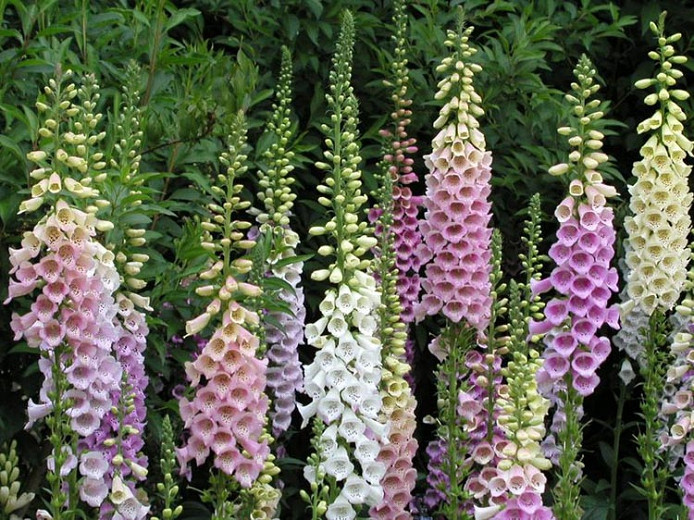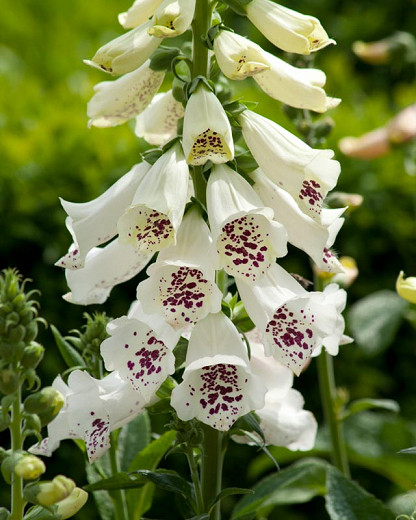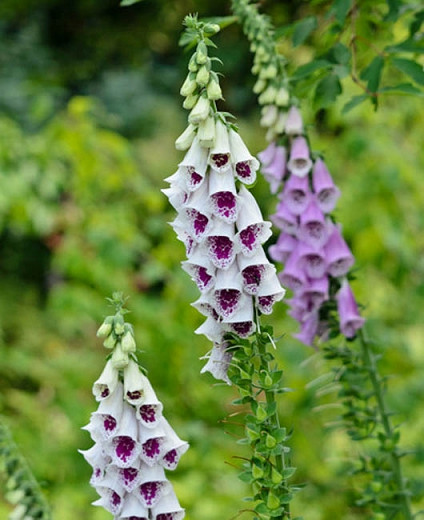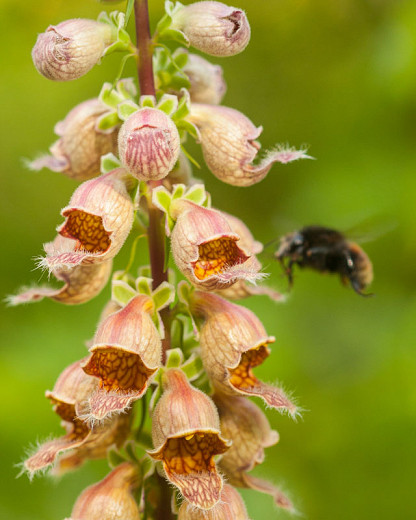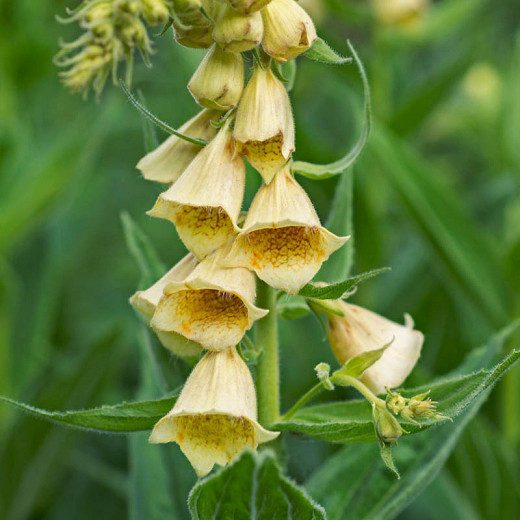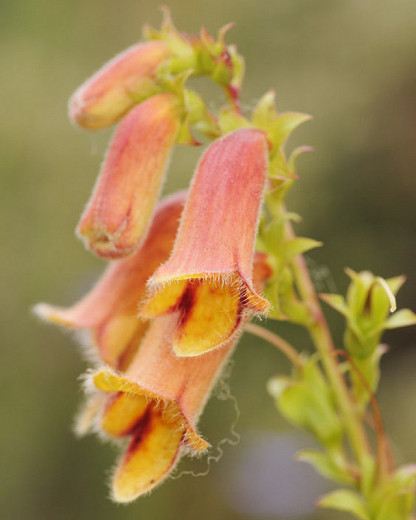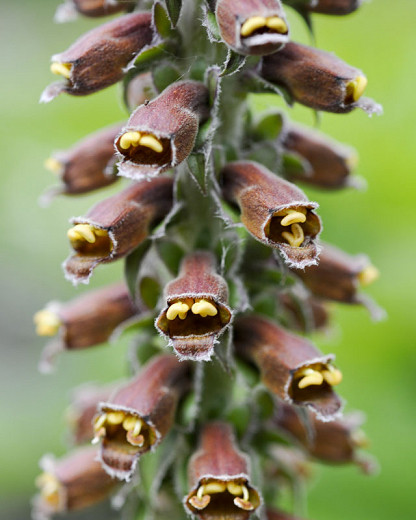Digitalis purpurea Excelsior Group (Common Foxglove)
Providing architectural height to borders, Digitalis purpurea 'Excelsior Hybrid' is a popular and remarkable strain of Foxgloves boasting tall spikes of pendulous, funnel-shaped blossoms in a lovely range of pastel colors including pink, lavender, and white. Arranged all around the spike, the blooms of this eye-catching biennial or short-lived perennial display throats copiously spotted with maroon or purple. Blooming profusely from late spring to mid-summer, they are attractive to hummingbirds, which hover near the tubular blossoms, and to birds that flock to the seedheads in the fall. The plant forms a low rosette of coarse, hairy leaves in the first year, bursting into flower the second spring, then setting seed and usually dying. Offering a long-lasting floral display, this eye-catching plant naturalizes well, as it self-sows freely, and creates lovely colonies in the landscape.
- Recipient of the prestigious Award of Garden Merit of the Royal Horticultural Society
- Grows vigorously up to 4-6 ft. high (120-180 cm) and spreads 18-24 in. (45-60 cm).
- Performs best in full sun to part shade, in average, medium moisture, well-drained soils. Prefers humus-rich soil in partial shade, but will grow in full sun. Deer, rabbit resistant.
- Easy to grow, Foxglove is a welcomed addition to beds, borders, woodlands, or naturalized areas. Perfect foil in front of shrubs or dark backgrounds. For best visual impact, plant Floxgloves in groups of 3 to 4 plants.
- Propagate by seed sown in situ in late spring. Alternatively, sow in seed trays in late spring and plant out to the final position in late summer
- Self-seeds freely under optimum growing conditions. Deadhead after flowering to avoid problems with excess numbers of seedlings.
- Highly toxic by ingestion. Wear gloves and wash your hands after handling.
- Toxic to dogs, toxic to cats, toxic to horses, toxic to humans.
- Digitalis purpurea is native to and widespread throughout most of temperate Europe.
- Find where Digitalis purpurea species is invasive in the United States.
- Discover beautiful U.S. native plant alternatives.
Requirements
| Hardiness | 5 – 9 |
|---|---|
| Heat Zones | 1 – 9 |
| Climate Zones | 1, 1A, 1B, 2, 2A, 2B, 3, 3A, 3B, 4, 5, 6, 7, 8, 9, 10, 11, 12, 13, 14, 15, 16, 17, 18, 19, 20, 21, 22, 23, 24, A2, A3 |
| Plant Type | Perennials |
| Plant Family | Digitalis – Foxgloves |
| Exposure | Full Sun, Partial Sun |
| Season of Interest | Spring (Late)Summer (Early,Mid) |
| Height | 4' – 6' (120cm – 180cm) |
| Spread | 1' – 2' (30cm – 60cm) |
| Spacing | 18″ – 24″ (45cm – 60cm) |
| Water Needs | Average |
| Maintenance | Low |
| Soil Type | Chalk, Clay, Loam, Sand |
| Soil pH | Acid, Alkaline, Neutral |
| Soil Drainage | Moist but Well-Drained, Well-Drained |
| Characteristics | Cut Flowers, Plant of Merit, Showy, Semi-Evergreen |
| Tolerance | Deer, Rabbit |
| Attracts | Birds, Butterflies, Hummingbirds |
| Garden Uses | Beds and Borders, Wall-Side Borders |
| Garden Styles | City and Courtyard, Coastal Garden, Informal and Cottage, Prairie and Meadow |
